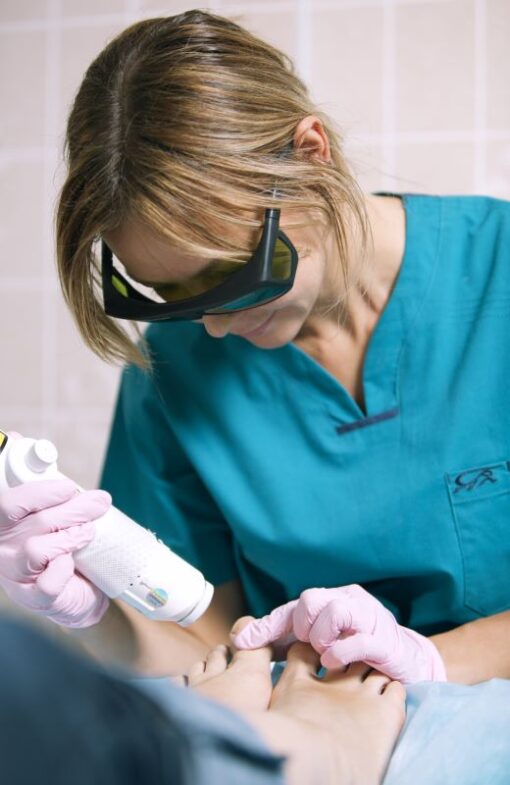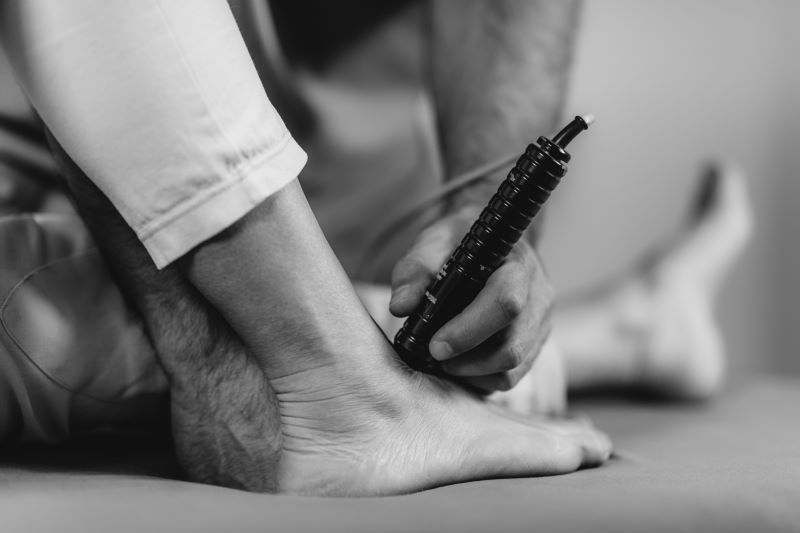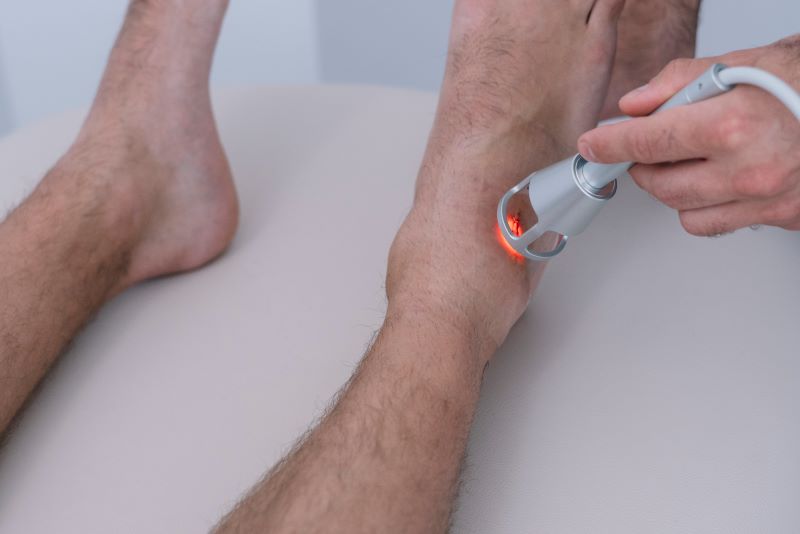MLS Laser Therapy Is A New Procedure to Minimize Pain
MLS Laser Therapy is a relatively new, minimally invasive procedure that uses lasers of varying wavelengths to deliver controlled laser energy to the body. This means that it can be used to target inflammation, pain, and edema through light and energy. Laser power has been used to help patients since the 1960s, but it is just beginning to be both effective and more readily available. Safe, effective, non-invasive therapies are few and far between, so learning about what MLS is, is important!
 What is MLS?
What is MLS?
MLS stands for Multi-wave Locked System. This is because it uses two different wavelengths simultaneously: 808 nanometers and 905 nanometers. 808 nanometers is a laser wavelength that has been proven to reduce inflammation and swelling, while 905 nanometers have been proven to reach deep into muscles and nerves to relieve pain. When combining these two wavelengths, the therapeutic effects actually maximize instead of canceling each other out. This unique combination of laser wavelengths also minimizes the risk of thermal damage to the body. MLS therapy uses this combination of wavelengths and delivers them via a special machine that a doctor can use to target specific areas of the body. This system has helped many patients to relieve symptoms and heal up to 30% more quickly after damaging events.
Why Does It Work?
Laser therapy, also known as LLLT (lower-level laser therapy), uses the power of light and energy to heal cells. Also called biostimulation or photobiomodulation, this use of laser light is able to penetrate individual cells, giving them energy and stimulating them to work more efficiently or to repair themselves. For centuries, people have used the power of the sun and heat to help them heal. In early trials, scientists conducting laser therapy thought that it might cause cancer in the animals they tested. They were shocked to find that laser therapy helped them to heal more quickly. This started LLLP and led to the production of more effective laser therapies like MLS. Now that MLS laser therapy is becoming more accessible, you may be able to find MLS laser therapy near you.
 MLS Process
MLS Process
When a patient receives MLS therapy, understanding the answer to “what is MLS?” is key, but the actual procedure is another piece of the puzzle. The procedure for MLS is simple and painless. The patient first sits or lies down in a comfortable position. The skin of the area that is to be treated must be exposed. Then, the laser technician will adjust the MLS laser machine so that the laser can be adjusted over the treatment area. Then, the laser will be focused on the area and turned on. The laser will remain on for several minutes, depending on your treatment plan. The laser will move slightly, passing over the affected area several times. The patient only needs to sit still during the treatment. Most patients will need between 3 and 15 sessions to complete their treatment plan.
MLS Laser Therapy Side Effects
One of the most exciting things about MLS laser therapy is that at this time, there are no known side effects. The importance of the fact that there are no MLS laser therapy side effects is that there are so few therapies that are accessible to almost every patient. This therapy can assist even patients who cannot walk or move on their own. It is extremely safe and can truly make a difference in many patients’ lives.
Benefits of MLS Therapy
While one of the obvious benefits of MLS therapy is the lack of MLS laser therapy side effects and the ease of the procedure, MLS also offers benefits such as:
- Pain relief without addiction
- Anti-inflammatory effects
- Rapid recovery of structural injuries
- Reduction in swelling
- Improvement of blood circulation
- Non-surgical treatment
- Release of endorphins
- Targeted treatment of an affected area
Conditions That Benefit from MLS Laser Therapy
Some of the medical conditions that are best treated by MLS laser therapy are arthritis, plantar fasciitis, muscle tears, sprains and strains, joint issues, and pain in general. Pain management is such a difficult science, and MLS therapy really helps minimize pain in many conditions. Patients who have conditions like diabetes, cancer, or AIDS can be helped with MLS therapy as well, because they often have difficulty healing from injuries or other problems. Many different conditions can be improved and aided in healing by MLS laser therapy, so it can be beneficial to talk with your doctor and see if it could be right for you in your situation.
MLS Laser Therapy Near Me
If you know the answer to “what is MLS?” and you want to experience it for yourself, finding MLS laser therapy near you is the next step. While you may want to make an appointment right away, something important to know about MLS laser therapy is that your doctor needs to understand what is MLS therapy enough to create a treatment plan for you. There are benefits to having a doctor who truly knows what amount of MLS therapy is best for your condition. How many sessions they recommend, how long the laser should be used, and what area should receive treatment are key components of getting the right benefits. It isn’t just about searching for “MLS laser therapy near me” online. It’s more about finding the doctor that can provide educated and helpful plans using MLS therapy for your specific ailment.
 MLS Therapy and Foot and Ankle Specialists of Illinois
MLS Therapy and Foot and Ankle Specialists of Illinois
At FASI, we are always seeking out the best and most effective treatment plans for our patients. Safe, effective therapies like MLS are always a focus for us. If you are seeking pain relief and management, treatment, and help for your foot or ankle condition, we are ready and willing to help you. Creating a treatment plan requires an understanding of as many possible treatment avenues as possible, and knowing how to utilize them for each patient. Make an appointment today, so you can receive the best care with the best treatment plans available.

